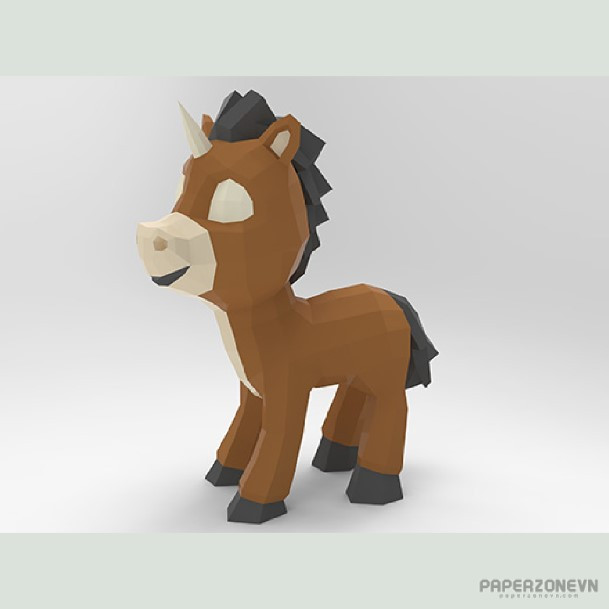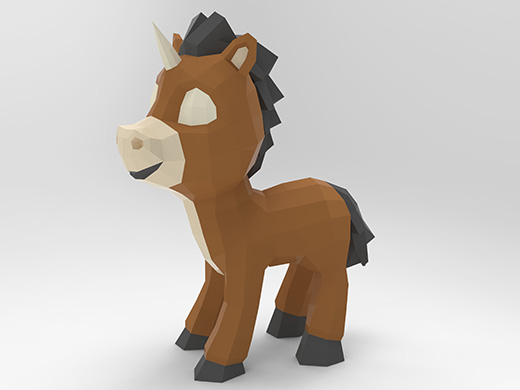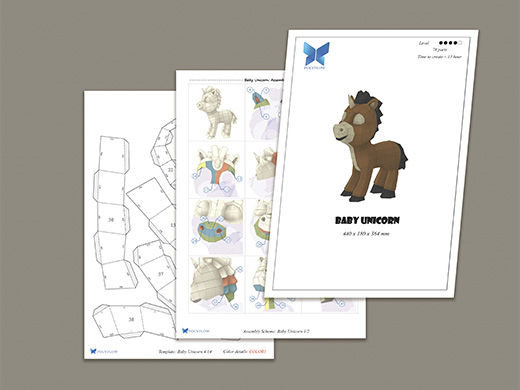- Thumbnail
-

- Resources
- animapapir.com
- Author
- Animapapir
- Printed File Format
- Page(s)
- 14
- Part(s)
- 78
- Instruction Format
Sponsored:
Sponsored 2:
Low Poly - Baby Unicorn Papercraft
A creature with a single horn, conventionally called a unicorn, is the most common image on the soapstone stamp seals of the Bronze Age Indus Valley civilization ("IVC"), from the centuries around 2000 BC. It has a body more like a cow than a horse, and a curved horn that goes forward, then up at the tip.[citation needed] The mysterious feature depicted coming down from the front of the back is usually shown; it may represent a harness or other covering. Typically the unicorn faces a vertical object with at least two stages; this is variously described as a "ritual offering stand", an incense burner, or a manger. The animal is always in profile on Indus seals, but the theory that it represents animals with two horns, one hiding the other, is disproved by a (much smaller) number of small terracotta unicorns, probably toys, and the profile depictions of bulls, where both horns are clearly shown. It is thought that the unicorn was the symbol of a powerful "clan or merchant community", but may also have had some religious significance.


A creature with a single horn, conventionally called a unicorn, is the most common image on the soapstone stamp seals of the Bronze Age Indus Valley civilization ("IVC"), from the centuries around 2000 BC. It has a body more like a cow than a horse, and a curved horn that goes forward, then up at the tip.[citation needed] The mysterious feature depicted coming down from the front of the back is usually shown; it may represent a harness or other covering. Typically the unicorn faces a vertical object with at least two stages; this is variously described as a "ritual offering stand", an incense burner, or a manger. The animal is always in profile on Indus seals, but the theory that it represents animals with two horns, one hiding the other, is disproved by a (much smaller) number of small terracotta unicorns, probably toys, and the profile depictions of bulls, where both horns are clearly shown. It is thought that the unicorn was the symbol of a powerful "clan or merchant community", but may also have had some religious significance.
- Size, cm 44x18x36,4
- Paper (format) A4
- Template, sheet 14
- Details (parts) 78
- Complexity Middle
- Instruction: PDF


Sponsored: Google Advertising
Attachments
Last edited by a moderator:
